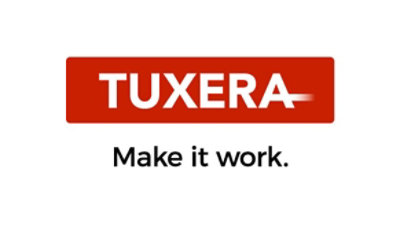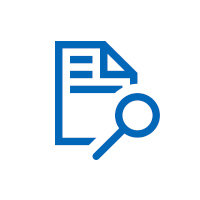Tech Licensing programs
Extended File Allocation Table (exFAT) is Microsoft-patented file system. exFAT can handle extremely large file sizes and enables seamless file exchange between devices that use removable storage, regardless of device or operating system. Combining wide interoperability with the capacity to handle files at virtually unlimited scale, exFAT is a must-have tech licensing program for companies seeking an efficient file storage and transfer solution.
How exFAT works
The exFAT file system handles large files, such as those used for audio and video media. It allows efficient storage and seamless data portability between desktop PCs and consumer electronic devices, enabling easy interchange between the two. Inheriting its base from FAT32, another Microsoft file system, exFAT can be implemented with minimal effort. Companies can also choose to add transaction support to their exFAT implementation (TexFAT) to assist with transaction-safe operations. exFAT has been included in Windows operating systems since Windows CE 6.0 and Windows Vista SP1.
-
Enables virtually unlimited card storage
exFAT allows devices to handle growing requirements for media file storage, increasing volume capacity into the terabytes. exFAT also allows for single files to exceed 4 GB, a limitation of FAT32.
-
Provides an extensible format
The extensible format includes OEM-definable parameters to customize the file system for specific devices.
-
Interoperability of systems and devices
exFAT supports interoperability with a very wide range of operating systems, avoiding the need to constantly reformat files and media.
-
Enables fast transfer speeds
With modern storage allocation techniques, file saves can achieve their full speeds.
Our exFAT licensees
More than 100 companies license exFAT, including some of the world’s best-known and most innovative OEMs. exFAT is used by the Secure Digital (SD) Card Association for high-capacity, high-speed SDXC and SDUC cards.
Direct license with exFAT implementation
Microsoft has agreements with several industry leaders that allow them to provide exFAT implementations directly to customers along with a direct license from Microsoft. These leaders can offer highly tuned implementations to provide the best end-customer experience and include warranty and support. This offering is available through the following companies:

Paragon Software Group

Embedded Access

Tuxera

exFAT as part of the Linux kernel


Contact us
Microsoft Exchange ActiveSync (EAS) is a powerful communications protocol that enables the syncing of email, calendars, contacts, and tasks on tablets and mobile phones, pushing accurate, reliable data.
How Exchange ActiveSync Works
The Exchange ActiveSync protocol is the language spoken between a mobile device or tablet and a messaging server, enabling synchronization of pre-defined objects. The EAS protocol allows devices to synchronize email, calendar, contacts, and tasks over the air with Microsoft Exchange, Outlook.com and other servers which implement the protocol.
Syncing is the process of reconciling differences between data stored on a device and on the Exchange Server. A mobile device or tablet will have its own email, contacts, calendar, and task applications, maintaining its own collection of objects and changes made since its last sync with the Exchange Server.
The device may initiate a new sync by sending a set of updates to the Exchange Server and requesting the Exchange Server respond with its own updates. The Exchange Server processes updates it receives, resolves any conflicts, and sends its changes back to the mobile device.
OEMs, application developers and service providers can license Exchange ActiveSync for use on their own devices, software, or servers.
Benefits of EAS
-
Complete syncing solution
EAS ensures seamless syncing of more than just email. EAS enables new contacts, calendar appointments, and tasks to be updated instantly on all types of devices. EAS also includes mobile device policies attractive to many businesses.
-
Push functionality
EAS can push messages and calendar appointments to mobile devices and tablets as soon as they become available, rather than fetching them from a server at fixed intervals. As a result, EAS works in real time, delivering updates at the speed consumers demand.
Broadly licensed protocol
Many OEMs and software developers have licensed EAS. Many of the world’s most widely used email clients adopt EAS to sync email and other data with top messaging servers.


Contact us
How SMB works
SMB is a client-server system. It provides a protocol for exchanging data packets between the client device and the server. Data packets may control sessions with the server, allow users to remotely access and edit files and directories stored on the server, and perform functions such as printing documents or authenticating users.
SMB is critical to ensuring that enterprise-level servers are secure and interoperable with the networks they serve. Other applications of SMB include peripherals such as printers and scanners, security cameras, televisions, and some mobile devices.
Traditionally used in local area networks, SMB can also be used to transmit data over virtual private networks and to cloud-based solutions. SMB is implemented in Microsoft Windows as Microsoft SMB Protocol.
SMB features
-
Extremely secure
Data transferred through SMB is protected from interception or alteration by strong encryption.
-
Reliable file transfer
Built-in redundancy ensures the accuracy and reliability of file transfers.
-
Superb interoperability
SMB enables seamless file transfer between Windows and non-Windows-based operating systems, as well as a wide variety of device types.
-
Common in mixed environments
Because SMB is interoperable and secure, it is almost universal in environments where multiple device types and operating systems interact.
-
High efficiency
SMB does not require high bandwidth and generates low network noise.
SMB technical documentation
While a technology license is required to implement SMB, Microsoft publishes documentation about the SMB protocols:
Direct license with SMB implementation

Highly available, cloud-scale SMB solutions for Enterprise storage

SMB solutions for Embedded devices, Storage, and Java systems
Our SMB licensees
Microsoft Technology Licensing offers licenses for SMB Client and SMB Server stack utilization implemented according to our protocol documentation in storage systems, a variety of devices, and software applications.


Contact us
How RDP works
RDP allows users of a remote client to connect securely to a server or virtual machine over a network. RDP connects with, and channels communication between, components of remote clients and servers. RDP is a multi-channel protocol, with separate virtual channels carrying different types of data. These include graphics data, keyboard and mouse user input, device communication, file system, audio and video, and licensing information. The RDP protocol has applications in secure business and government network solutions, including where an encrypted desktop is required. RDP client software is also built into Windows Pro and Enterprise. For developers building remote desktop client applications for computers, phones, tablets, or other devices, Microsoft Technology Licensing (MTL) offers a technology license for the RDP protocol set.
RDP features
-
Interoperable
RDP enables the Windows experience across a range of devices, and operating systems.
-
Secure
RDP enables a secure connection between a client and a server or virtual machine. RDP can enable the delivery of an encrypted desktop.
-
Enables network terminals
RDP enables the use of network terminals and “thin client” PCs, which provide strong physical security by storing all data and documents remotely.
RDP technical documentation
Although a technology license is required to integrate the RDP protocol into a device, the RDP product documentation describing the RDP protocols is freely available on the Microsoft Developers Network.
Our RDP licensees
Microsoft licenses RDP globally to several customers developing remote desktop, cloud, and device solutions.


Contact us
Microsoft White Space Patents and our patent pledge
Microsoft promises not to assert any of the White Space Patents listed below against any person or entity for their efforts to provide or support the provision of internet access to rural or underserved markets. Microsoft may occasionally expand the list as it procures additional patents directed towards TV white space technology.
- US10129883
- US10334507
- US10334658
- US10349444
- US10383006
- US7876786
- US8179797
- US8185120
- US8254393
- US8437790
- US8473989
- US8488633
- US8547862
- US8805427
- US8811903
- US8812011
- US8849269
- US8879573
- US8923770
- US8929933
- US8929935
- US8938272
- US9042935
- US9094834
- US9094837
- US9178652
- US9179323
- US9271156
- US9277032
- US9288681
- US9288682
- US9301299
- US9313664
- US9357402
- US9386558
- US9392568
- US9397723
- US9408132
- US9438374
- US9462479
- US9538390
- US9544777
- US9674839
- US9681367
- US9705637
- US9723541
- US9730186
- US9763255
- US9769796
- US9787507
- US9801074
- US9854501
- US9883406
- US9918313
- US9924371
- US10716113


Contact us
Request a license
License agreement
Always first review the PlayReady website to ensure that you are selecting the appropriate license agreement for your company.
Ensure your account is up to date
Our IP Licensing team provides licensing administration for Microsoft PlayReady Agreements. It's important to note that Microsoft only executes these technology distributions and/or product development agreements with a "Company" (which may be a sole proprietorship, corporation, educational institution, or a non-profit). Contact us to ensure your accounts are up to date prior to starting your licensing request.


Contact us
Implementation on a non-Windows platform
To get source code for the Windows Media Audio and Video codecs and to develop and distribute Interim Products, you must execute the agreement below. Interim Products are Windows Media Components-enabled products that aren’t customer-ready (e.g., integrated circuits). After this agreement is executed, you may receive:
- Windows Media Audio 9 Decoder for WMA 9 Series Standard, Lossless, and Voice Codecs and WMA 10 Professional Codec (includes Advanced Systems Format (ASF) Reader)
- Windows Media Video 9 Decoder for All Profiles and Levels
- Windows Media Audio 9 Encoder for WMA 9 Series Standard, Lossless, and Voice Codecs and WMA 10 Professional Codec (includes ASF Writer)
- Windows Media Video 9 Encoder for All Profiles and Levels
- Distribution rights: Interim Product Licensees are authorized to ship Windows Media Component implementations to Windows Media Components Final Product Agreement Licensees.
Distributing a device or software
To get object code implementations of the Windows Media Audio and Video codecs and to distribute these implementations on a royalty-bearing basis in customer-ready Final Products, you’ll need to execute the following agreement. Final Products can be non-Windows software apps or hardware devices. After this agreement is executed, you may receive:
- Distribution rights: As a consumer electronics manufacturer or hardware vendor, you can distribute Windows Media-based Final Products such as portable audio and video players, set-top boxes, and mobile devices with audio and video capabilities to consumers.
Windows Media Components lists

Licensee and Approved IC list
Get started with Windows Media
Executing a VC-1 Patent Portfolio License
As you might be aware, WMV-9 from Microsoft conforms to the VC-1 standard. Thus, every company implementing WMV-9 products or content should consider the benefits of executing the VC-1 Patent Portfolio License. The VC-1 Patent Portfolio License, which is the Microsoft-preferred method of licensing the patents in this technology, grants a license to VC-1 essential patents from many companies (including Microsoft) and thus provides additional coverage and value for WMV-9 implementers. Distributions of Final Products containing implementations of the WMV codec are royalty-bearing, although those royalties are substantially discounted for licensees of the VC-1 Patent Pool.
Request a Windows Media Components license from Microsoft
Microsoft's IP Licensing team provides licensing administration for Microsoft Windows Media Component Agreements. It's important to note that Microsoft only executes these technology distributions and/or product development agreements with a "Company" (which may be a sole proprietorship, corporation, educational institution, or a non-profit). Additionally, expect significant delays to your license request if your company has any outstanding payments with Microsoft. Email us to ensure your accounts are up to date prior to starting your licensing request, and always first review the sample agreements above to ensure that you are selecting the appropriate license agreement for your company.


Contact us
Azure RTOS
Azure RTOS will be transitioning to an open-source model under the stewardship of the Eclipse Foundation, a recognized leader in hosting open-source IoT projects.
With Eclipse Foundation as the new home, Azure RTOS becomes Eclipse ThreadX – a comprehensive embedded development suite including a small but powerful real-time operating system that provides reliable, ultra-fast performance for resource-constrained devices. It’s easy-to-use, market proven, and trusted by developers and manufacturers for over two decades. It also supports the most popular 32-bit microcontrollers and embedded development tools so teams can make the most of their existing skills.
Eclipse ThreadX for more information























Follow Microsoft